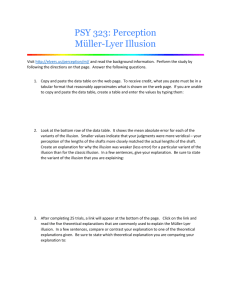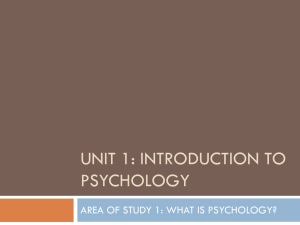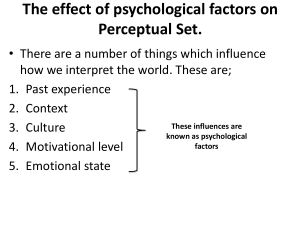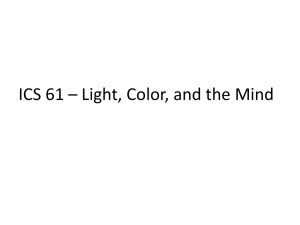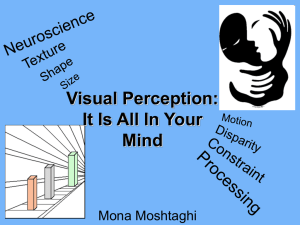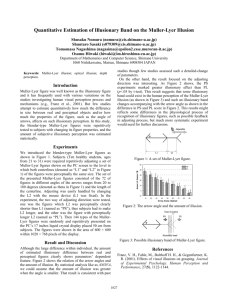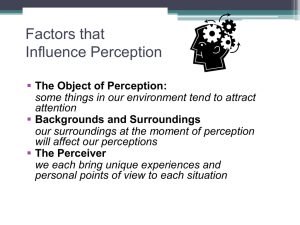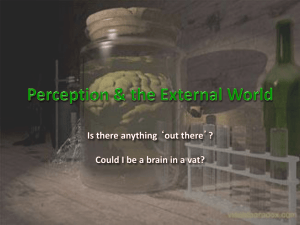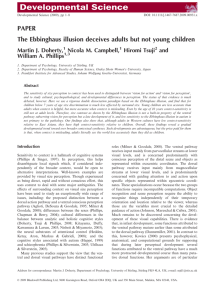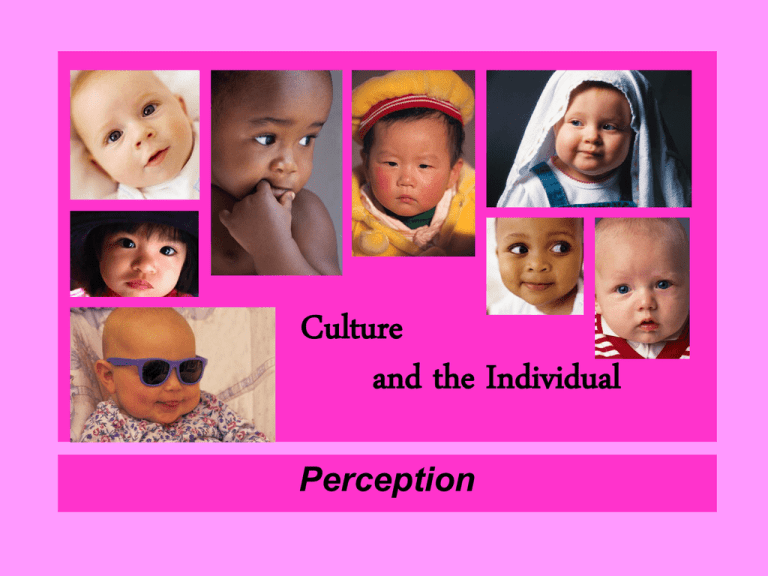
Culture
and the Individual
Perception
Everyday Assumptions about
Perception
• Phenomenal absolutism - the assumption
that the world is as you see it.
• Perceptual constancy - the perception that
objects keep their size no matter how far
away they are
Approaches to Studying Perception
• Nativists - perception is based on the
structural limits of the human nervous
system (is genetically/biologically based)
e.g. Gibson - three dimensional world is
viewed through the two dimensional
surface of the retina
• Empiricists - perception is highly
influenced by the kinds of experience
people have (is learned)
Brunswik's Empiricist Theory
A Base for Cross-Cultural Research
Egon Brunswik (1950s)
• perception involves transactions
between an organism and incoming
sensory materials,
• perception is the combined product of
the object and the perceiver, with
experience being very important
Tuning Fork Figure
Draw this figure.
Impossible Figures
This figure is usually
perceived by western
educated people as a three
dimensional figure that is
difficult to draw accurately
from memory.
It is usually perceived by
people from traditional
societies as a two
dimensional figure that is
easy to draw
accuratelyfrom memory.
Symbolizing Three Dimensions in Two
• Symbols on paper in literate societies,
maps, writing
• Experience with representational
drawings should increase susceptibility
to three-dimensions-in two illusions
• Photographs
Photographs
Black and White Vs Color
• African natives who do not have
experience with two dimensional
representations of objects CANNOT
identify objects in black and white photos.
• They CAN identify objects in color photos.
Sander Parallelogram
Muller-Lyer
Muller-Lyer
Muller-Lyer
Muller-Lyer
Carpentered World Hypothesis
Muller-Lyer and the Carpentered
World Hypothesis
Muller-Lyer
• The illusion is not cross-cultural. Non-Western
subjects, and particularly subjects whose day-today surroundings are usually not rectangular
(few buildings, doors, walls) are much less likely
to be affected by it (Segall, et al., 1963).
Researchers discovered that the Zulu people,
whose typical dwellings are circular thatched
huts with no angular walls, were much less
susceptible to the illusion.
The Carpentered World Hypothesis
Parallelogram illusion
Muller-Lyer illusion
• Carpentered environment causes
interpretation of non-rectangular
objects as rectangular
• Carpentered environment causes
perception to take on depth perspective
• Carpentered environments cause
perception of three dimensions as two
Frontal-horizontal Foreshortening
Horizontal-vertical illusion
• Open, spacious environments lead to
horizontal-vertical illusions
• Urban, canyon or forest dwellers will be
less susceptible to horizontal-vertical
illusion
Frontal-horizontal Foreshortening
Ebbinghaus
Which red circle is larger? Smaller?
Ebbinghaus Illusion
• The Ebbinghaus (Titchener) illusion was examined in a remote
culture (Himba) with no words for geometric shapes. The illusion
was experienced less strongly by Himba compared with English
participants, leading to more accurate size contrast judgments in the
Himba. The study included two conditions of inducing stimuli. The
illusion was weaker when the inducing stimuli were dissimilar
(diamonds) to the target (circle) compared with when they were
similar (circles). However, the illusion was weakened to the same
extent in both cultures. It is argued that the more accurate size
judgments of the Himba derive from their tendency to prioritize the
analysis of local details in visual processing of multiple objects, and
not from their impoverished naming. (PsycINFO Database Record
(c) 2007 APA, all rights reserved)(from the journal abstract)
Figure and Ground
Figure and Ground
Figure and Ground
Americans begin by describing the figures
that are in the foreground:
Three women sitting on a boat
Three men walking together
Asians (Japanese, Korean, Chinese) begin
be describing the background/context
The beach with sand and water in an
area in which fishing is a major activity
Color Perception
• Now, a new study by researchers at the University of Surrey
suggests that the process of learning new color categories produces
subtle but significant changes in how people actually perceive those
colors.
• The findings, published in the Journal of Experimental Psychology:
General (Vol. 131, No. 4), support the linguistic relativity hypothesis-the idea that the language one speaks can affect the way one
thinks about and perceives the world.
• "The main conclusions of the study are basic: that color perception
is not as rigid and inflexible as was thought before," says the study's
lead author, Emre Ozgen, PhD. "This is the first time that it's been
shown that a new perceptual color category boundary can actually
be induced through laboratory training."
Illusion Suceptibility
• Westerners are more easily fooled by the
Muller-Lyer illusion than folks from
traditional societies
• Folks from traditional society are more
easily fooled by the Horizontal-Vertical
foreshortening effect
Conclusions
• Illusions may occur due to learned
habits inappropriately applied
• Different inference habits are learned in
different physical and cultural
environments
• As people age, they become less
susceptible to illusions

